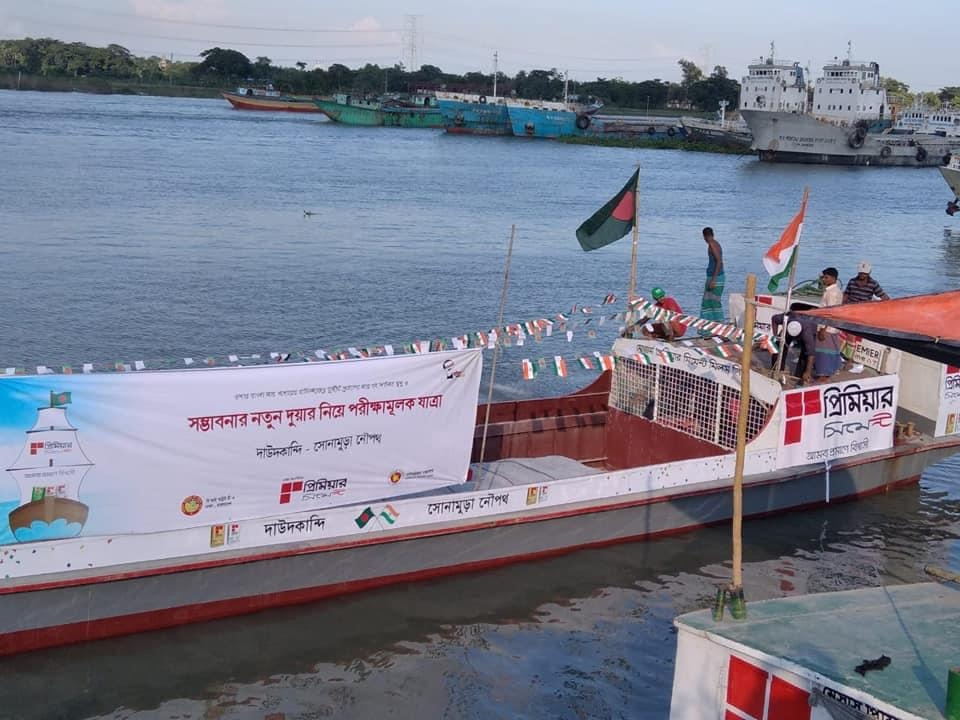The Transport Connectivity Master Plan of the Bay of Bengal Initiative for Multi-Sectoral Technical and Economic Cooperation (BIMSTEC), which aims to create seamless connectivity between and across countries in the Bay of Bengal through air, sea, and land linkages, will soon become a reality, further strengthening India's resolve to revive the global maritime trade and make the region a hub of commercial and cultural exchange.
BIMSTEC is a regional organisation comprising seven member states around the Bay of Bengal region. It constitutes a unique link between South and South-East Asia with five members from South Asia (Bangladesh, Bhutan, India, Nepal and Sri Lanka) and two from South-East Asia (Myanmar and Thailand). The BIMSTEC region brings together more than 1.67 billion people and a combined GDP of around US $ 2.88 trillion.
With its 'Act East' and 'Neighbourhood First' policy as the main driving force, India continues to make giant strides in integrating countries surrounding the Bay of Bengal by leading the efforts to restore the historical connectivity through enhanced transport and trade linkages – not just in Bay of Bengal, but also the other wider areas of the Indo-Pacific Region.
At the Senior Officials' Meeting (SOM) of BIMSTEC on Wednesday, held a day ahead of the 17th BIMSTEC Ministerial Meeting to be chaired by Colombo today, foreign ministry officials of all the seven member states once again pledged to continue prioritizing sustained physical connectivity and high-quality infrastructure, to help facilitate greater regional flows of goods, services, and people.
It is expected that the Master Plan will be approved by the foreign ministers of member states today and would subsequently be adopted by the 5th BIMSTEC Summit. It was prepared as a strategic document to guide actions and promote synergies among various connectivity frameworks and has identified 267 projects of construction, expansion and modernization of transport infrastructure. Among these, 137 'flagship' projects have been identified to enhance connectivity in the Bay of Bengal region.
ALSO READ: India, Japan to step up work to link North East region with Indo-Pacific

India continues to take lead in the priority sectors of cooperation like counter-terrorism and transnational crime, transport and communication, tourism, environment and disaster management and connectivity which was included as one of the priority areas of BIMSTEC cooperation with the objective to promote trade and investment, tourism, people-to-people contact and cultural exchanges to contribute to the sustainable development of the region.
Some examples of such connectivity projects include the Kaladan transport project, the Trilateral Highway Project, an East-West corridor connecting India's Northeast with Myanmar and Thailand, the Rhi-Tiddim road in Myanmar, construction of India-Bangladesh Friendship Pipeline and dredging of inland waterways in Bangladesh, the Biratnagar integrated checkpost with Nepal, reconstruction of railway tracks in Sri Lanka, road projects and power transmission lines in Nepal, etc.
The importance given to connectivity in the Indo-Pacific by India can be gauged from the fact that Prime Minster Modi, while elaborating India's Vision of the Indo-Pacific at Shangri-La Dialogue in 2018, had stated that connectivity is vital since it does more than just enhancing trade and prosperity and unites the region. "It doesn’t focuses just on building infrastructure but also on building trust," PM Modi had emphasized.
BIMSTEC Coastal Shipping Agreement and the BIMSTEC Motor Vehicle Agreement will ensure seamless multi-modal transportation linkages and smooth, synchronized and simplified transit facilities through the development, expansion and modernization of highways, railways, waterways, sea routes, airways in the region.
ALSO READ: India's Act East policy takes wings with water connectivity with neighbours as focus

"On multilateral/regional front as member of mechanisms such as the ASEAN, BIMSTEC, Mekong Ganga Cooperation, India is also undertaking various regional connectivity initiatives. We are currently discussing a Coastal Shipping Agreement and Motor Vehicle Agreement in the BIMSTEC format and also in the Bangladesh, Bhutan, India and Nepal (BBIN) group. We are also working on extending India’s National Knowledge Network to BIMSTEC partners. Cooperation under BBIN is also being discussed in the areas of power and water resources management," said Riva Ganguly Das, Secretary (East) at the Ministry of External Affairs, recently.
External Affairs Minister S. Jaishankar too has explained in detail at various platforms how India has taken the lead in improving connectivity in the region through a mix of instruments, including grant execution of projects, lines of credit, etc.
"Connectivity today does not mean only roads and railway lines, but also digital connectivity. We have to move towards further integrating our digital networks to provide greater access, more affordable and high-speed internet and mobile communications to our peoples. We will be happy to share knowledge and best practices based on India’s traditional strengths in the field of IT/ITES," Jaishankar said during a webinar titled 'Revisiting Economic Cooperation in BIMSTEC in Post-Covid 19 Era' organised by Research and Information System for Developing Countries (RIS), last year.




















